What is Spain known for? From its flag to bullfighting, the national flower, to famous cities, and more! So what is Spain famous for? Let's go on a virtual trip and learn about this rich cultural and vibrant country.
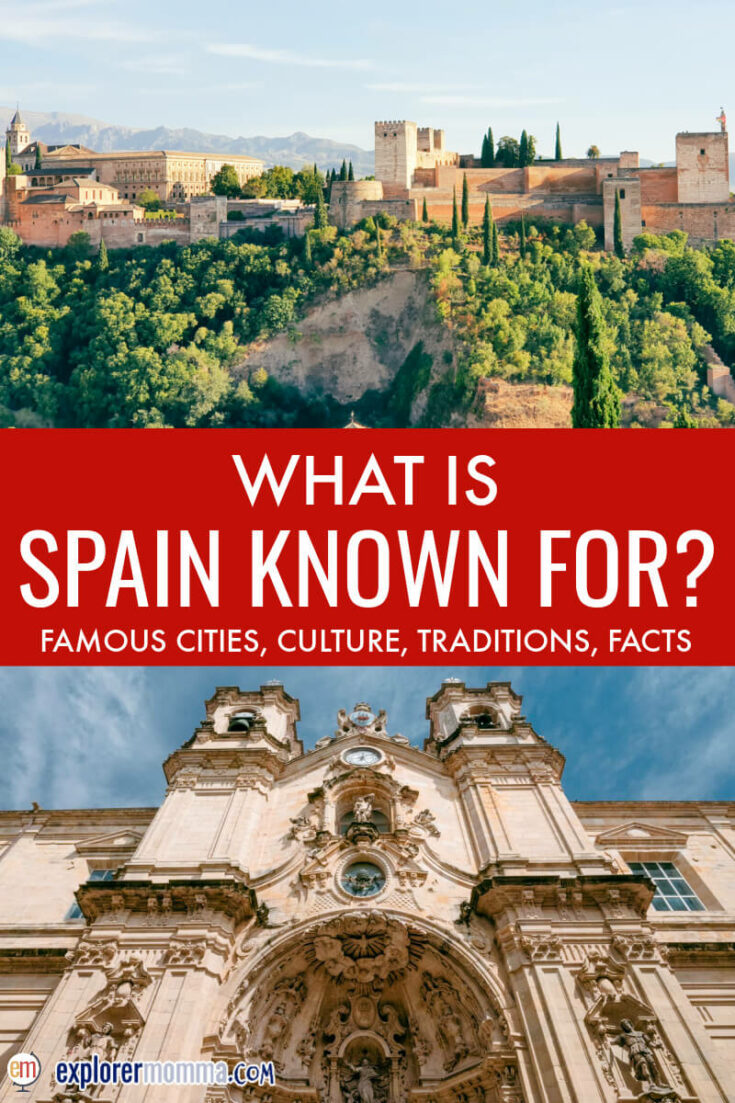
This post may include Amazon and other affiliate links. As an Amazon Associate, I earn from qualifying purchases.
When you think of Spain what comes to mind? Maybe it's the famous dashing and fearless bullfighters? Or perhaps one thinks of one of the world-renowned cities, Barcelona or Madrid. There's the magnificent flamenco dancing, tapas, paella, red carnations, Franco, Picasso's Guernica, the list goes on good and bad. Don't forget that knight errant sallying forth into the world to fight all wrongs and windmills, Don Quixote de la Mancha!
So what is Spain famous for? There is much history and culture to celebrate about this country, and so much for a foreigner to learn. Let's begin our mini virtual tour of all things Spain, what is Spain known for?
Flag of Spain | National Animal | Spanish Dance | Currency | Languages | Foods | National Flower | National Tree | National Bird | Spanish Cities | Almeria | Barcelona | Bilboa | Cordoba | Girona | Granada | Jerez de la Frontera | Madrid | Malaga | Montserrat | Palma | Salamanca | San Sebastian | Santander | Santiago de Compostela | Seville | Tarragona | Toledo | Sports | History | More | Conclusion
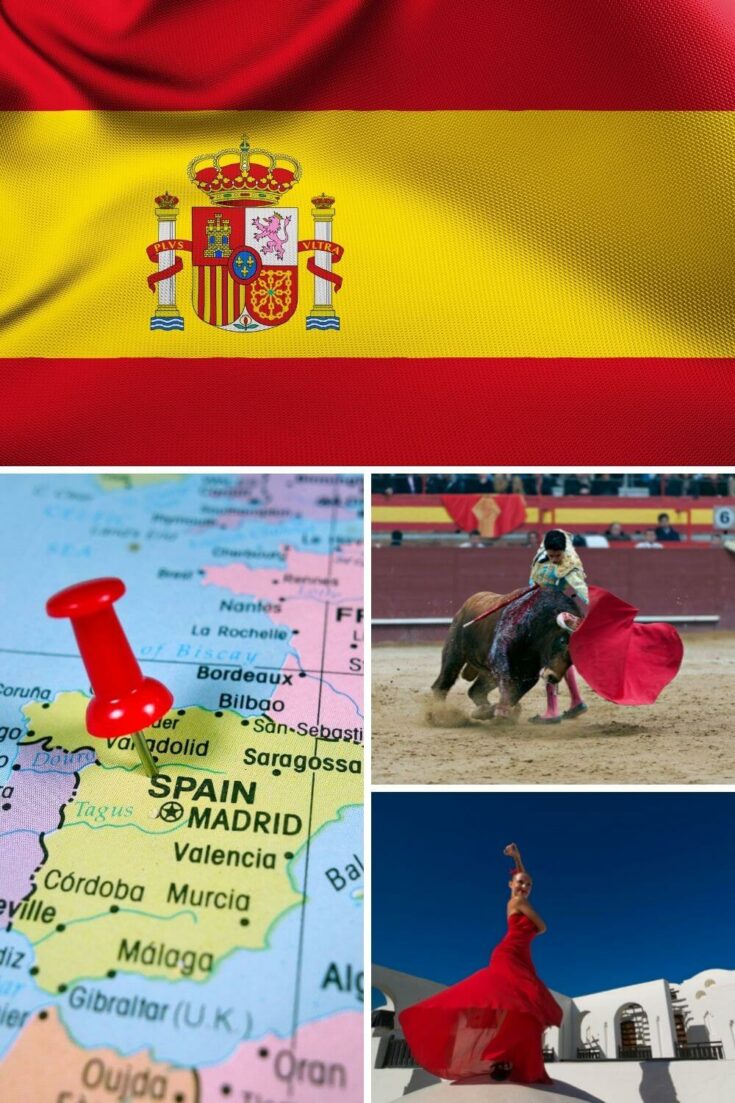
The Flag of Spain
If you look at the picture of the Spanish flag picture above, immediately noticeable are the famous red and gold colors proudly waving. Some people say the red represents the blood of the bulls and the gold the golden sand of the bull-fighting arena. Others say the red represents the blood of the Spanish people, and the gold is the sun.
What we do know is that the first King of Spain, Ferdinand I (1016-1065) used the colors during his reign. Also, Spain was the first country in Europe to claim the colors red and gold.
Now, the emblem is a combination of several things, actually six different coats of arms. Pictured are a castle on the red background, a crowned lion on white, vertical red and gold stripes, fleur-de-lis - the iris flowers, and in the middle, a pomegranate flower.
Two pillars of Hercules surround the coat of arms along with the words plus ultra, or further beyond.
National Animal
The national animal of Spain is no surprise, it is the bull. Bulls are famous all over Spain for their long tradition of bull-fighting. It's the intricate dance between the bull and the elegant Matador, the bull-fighter whose task it is to wear down the bull and kill it. Most often the fight will end when the Matador kills the bull with his sword, but it can be pardoned if is behaves especially well.
After the traditional bullfight, the people prepare it to eat for the feast following the bullfight.
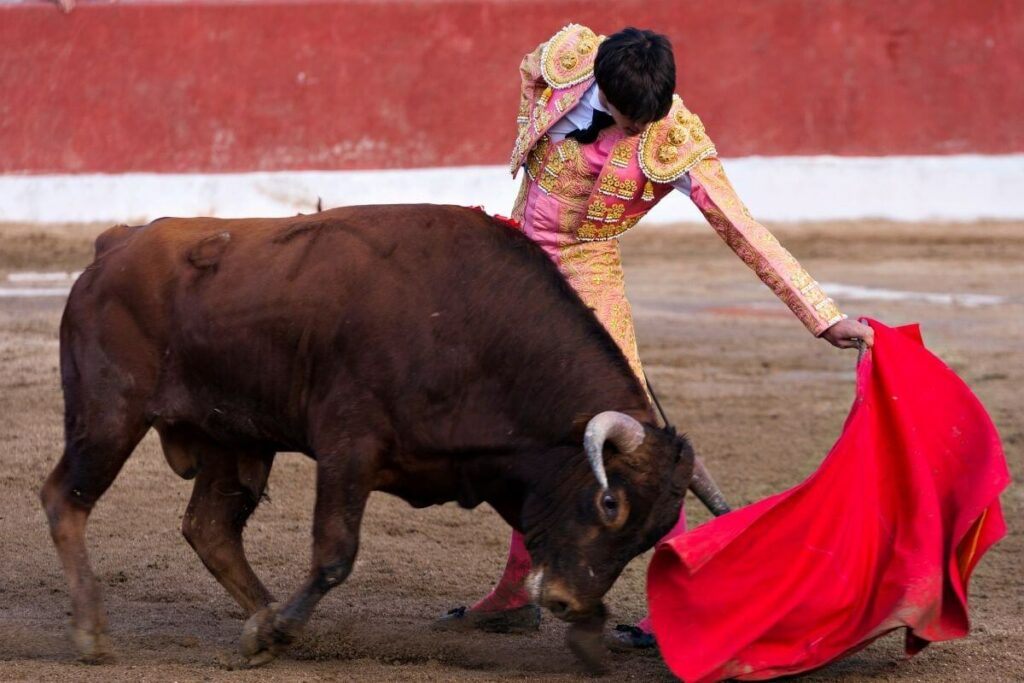
There's also the famous San Fermin running of the bulls festival in Pamplona, Spain. Every year around 20,000 brave (or crazy) people take to the streets to attempt to outrun the six bulls let loose. Now, this is a European festival and happens not just one day but for eight days running (get it, running? 😂 )!
Not only do festival-goers try to escape the angry bulls. No indeed, they wave red bandanas and watch the numerous parades going on. One of the daily parades includes one for the Catholic saint for which the festival is named, St. Fermin. Celebrants in general eat, drink, and be merry.
Spanish dance
Flamenco is now officially the national dance of Spain. However, it has caused havoc, disagreement, and disapproval over the years. In fact, I've been told flamenco was possibly more of a Spanish stereotype encouraged by foreigners but not as well accepted by the Spanish people until recently. Critics accuse the dance of being distracting, immoral, preventing progress, etc.

Luckily for us, today UNESCO recognizes flamenco as part of the World's Intangible Cultural Heritage. Introduced by gypsies in the southern part of the country, around Andalusia, the complicated cultural display is not just a dance but a form of poetry. It incorporates poetry, singing, guitar playing, dance, polyrhythmic hand-clapping, and finger-snapping or castanets.
Musicians and performers in the Caribbean, Latin America, and Europe also influenced the dance to make it what it is today. It's always fascinating to learn more about the Complicated History of Flamenco in Spain. If you do travel to Spain, be sure to watch a performance or participate in your own dance lesson.
National currency
What kind of money will you need when traveling to Spain? Ask with most of Europe, Spain uses the Euro. Before a trip to Spain, visit the local bank to order money or you can change at the airport or ATM on the way over.
Languages spoken
What language do people speak in Spain? Your answer is probably partially correct. Most will say the people of Spain speak Spanish (Castilian); however, citizens of Spain speak many other languages and dialects as well. There's Galician, Basque, Catalan, and more.
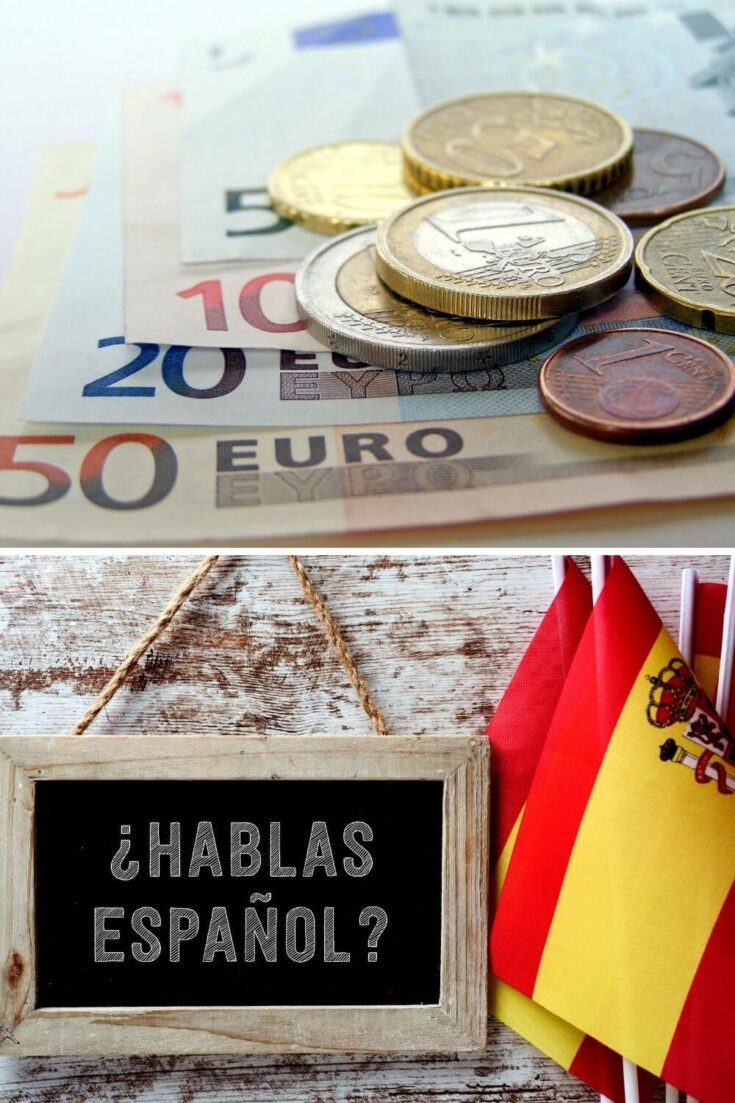
Famous foods in Spain
Most travelers gush about the glorious food found on offer in Spain. Two of the most famous include tapas and paella.
Tapas are small appetizers, call them snacks or canapés. In fact, going from one tapas bar to others with a group of friends is a popular activity in Spain. That way you get to sample the best at each and enjoy food and friends. Another thing to note, don't expect to find the same tapas at each tapas bar. Tapas vary all over Spain depending the what is fresh, the regional culture, or the whims of the chef!
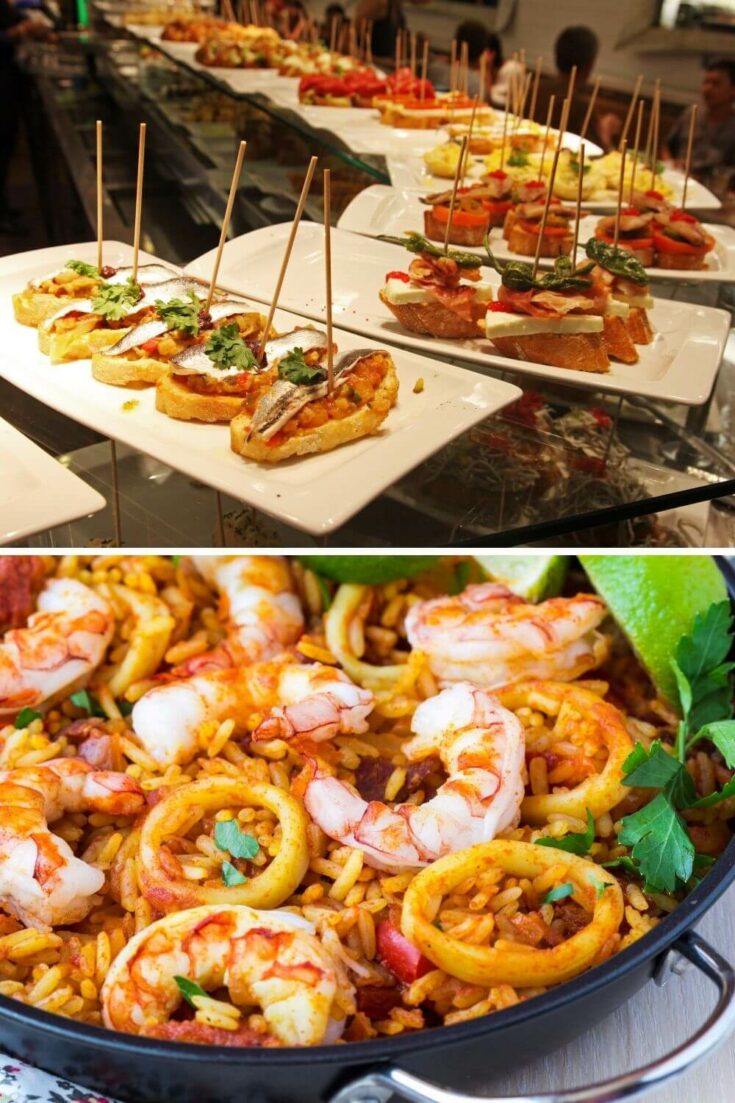
Another famous Spanish food is, of course, paella. A mixture of rice, chicken, saffron, vegetables, and seafood makes up the traditional Spanish dish. When I think of Spanish food, it is the one that immediately comes to mind. I even created my own Keto Paella recipe when issues canceled my last trip to Spain. Travel by food, why not?!
Spanish national flower
The national flower of Spain is the Red Carnation. The scientific name of the carnation is Dianthus, which means "flowers of Gods" in Latin. I can completely see why some people say it reminds them of a flamenco dancer's skirt. What does it remind you of? The flower also represents the affection of lovers and is a religious symbol for the passion of Christ.
You'll see the beautiful bright red carnations growing on the bright white houses in southern Spain. In addition, they appear as a hair decoration in flamenco dancing. Red carnations are prominent in parades, bull-fighting, and even held in the mouth by the romantic Spanish guitar player who serenades under his lady's window. Read more about it or draw the National Flower of Spain.
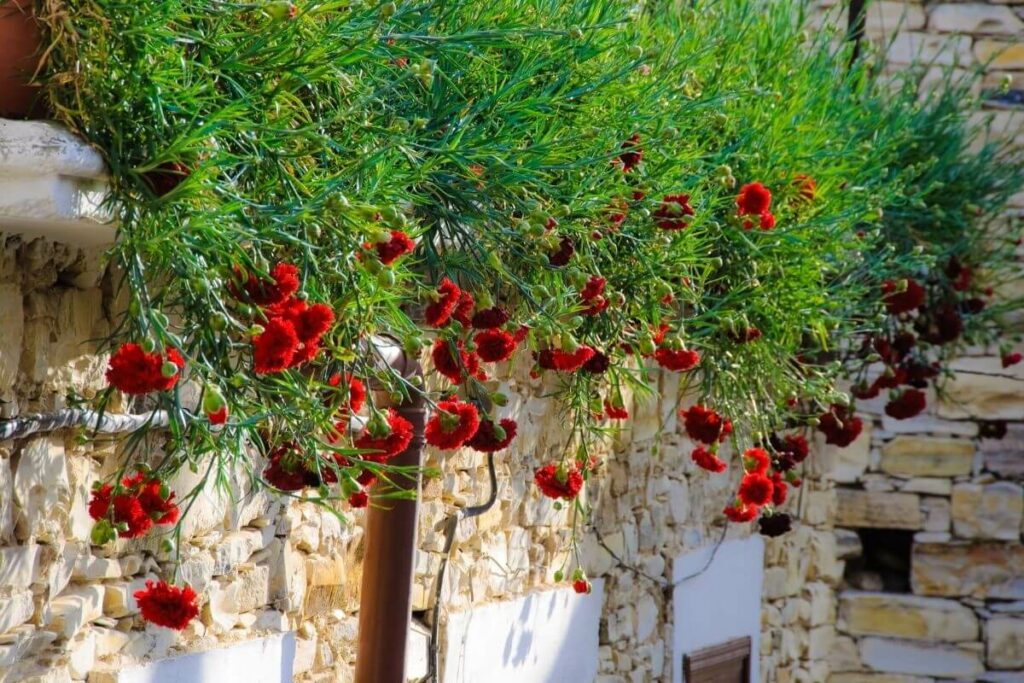
Spanish national tree
The national tree of Spain is the Holm Oak. The Holm Oak grows well in the Mediterranean climate and is seen in fields all over Spain. It produces acorns, and the word holm is an old word for holly. Another interesting fact, the oldest Holm Oak in Spain is the Encina Tres Patas de Mendaza. It's located in Navarre, is known to be 1,200 years old.

Spanish national bird
The national bird of Spain is the majestic Iberian imperial eagle. The raptor is a predator and a threatened species in central and southwest Spain and Portugal, living on the Iberian Peninsula. It likes woodlands near areas of shrubbery where it's easiest to find rodents and other prey.
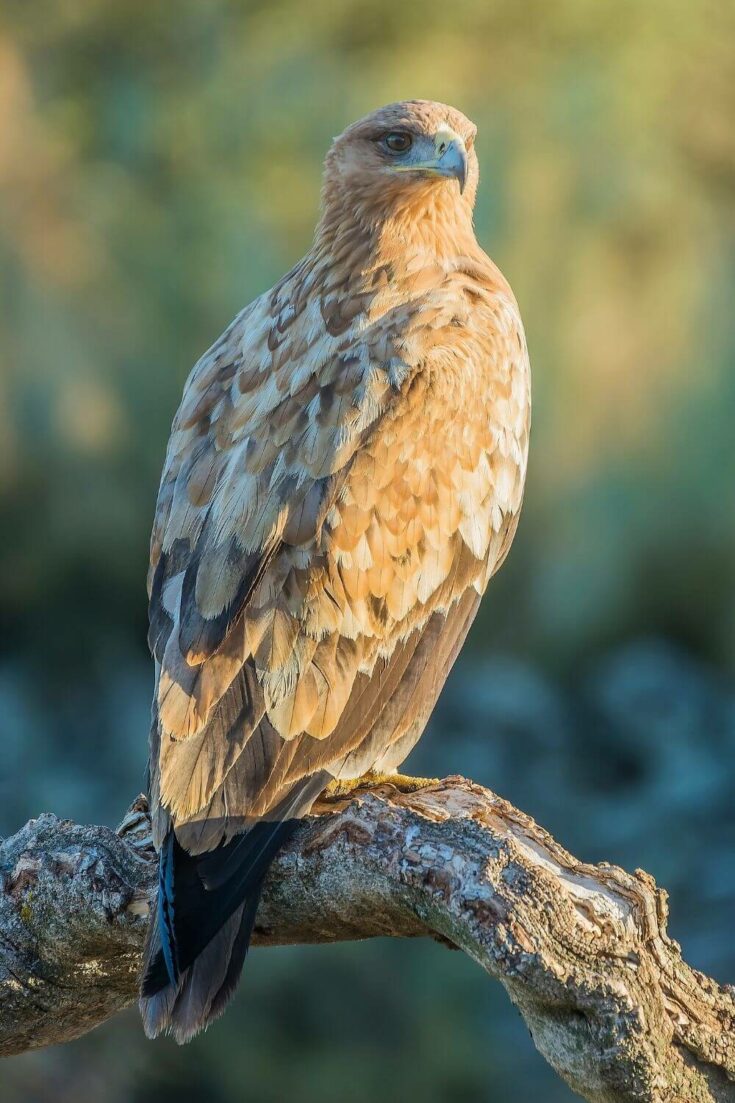
What is Spain known for? Cities!
When you think of a specific country and what it's known for, one thing that immediately comes to mind is its major cities. I've asked some fellow travelers for their recommendations and insider tips for these famous Spanish cities. I've loved reading and discussing each city, and cannot wait to get more of my own traveling in around Spain.
Let's take a look at some of the most well-known cities in Spain, in alphabetical order…
Almeria
There's so much to learn, enjoy, and visit that combine to make Almeria a well-known city in Spain. Almeria is the ultimate destination in Spain for school-going kids to teenagers for many reasons. It is like an outdoor playground. It has numerous beaches that offer many water sports for kids. The deserts are also the destination for famous amusement and water parks. There are also many hiking opportunities nearby to discover the beauty of this Andalusian destination.
There is a lot to learn, enjoy and visit, that combine to make Almeria a great place for kids and all visitors. Read on to discover popular things to do in Almeria.
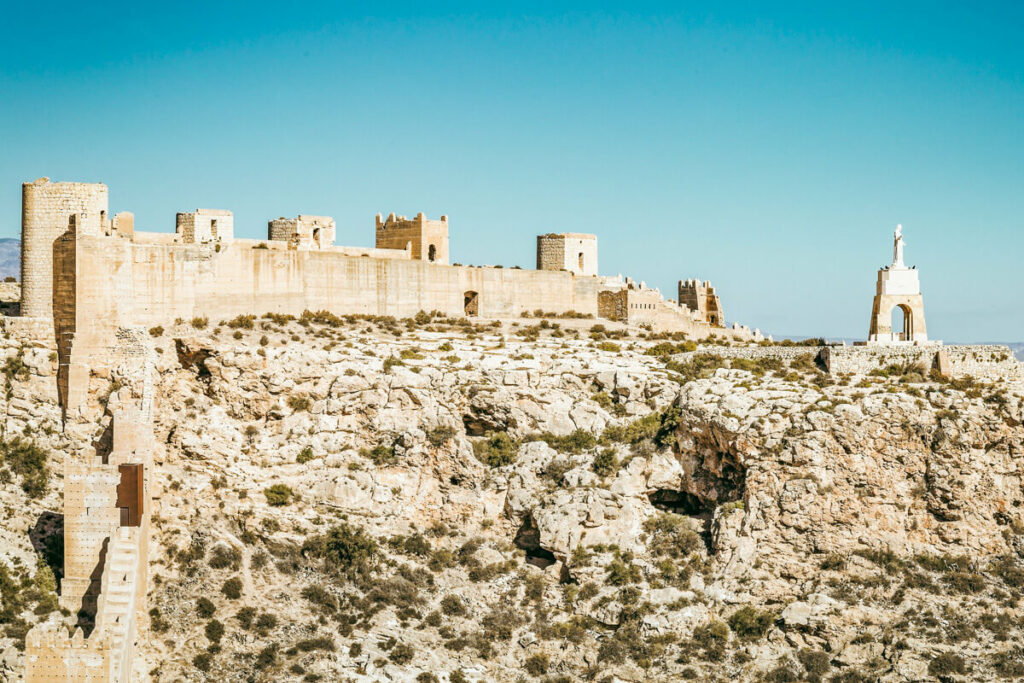
Top historical destinations
Almeria is popular for its old fortresses, churches, and museums. These monuments are great for the kids to discover the history of this Andalusian province. One of the most popular destinations is The Alcazaba, an old fortress built in 955. At first, it used to be the shelter for the population of the province who were in extreme danger. After that, it was a residence for governors and their families.
Another popular place to explore is The Cathedral of Almeria. The construction of the Cathedral began in 1524. The architecture of the building tells much about Gothic and Renaissance influence.
Cultural fair and festivals
The Fair and Festival of Almeria happens in the third week of August in the spirit of Virgen del Mar. Visitors can enjoy various sports, bullfights, fair pottery, and other activities with their families. They can also learn about other traditions like the pilgrimage Torregarcia and The Virgen del Carmen.
Educational museums
Parents can also take their kids to popular museums where they can learn about the region's history and culture. The big museums like the Museum of Almeria, Casa del Cine, Arte21 Almeria are great places to pay a visit.
From Paulina, Paulina on the Road
Barcelona
Barcelona is a vibrant city located on the Mediterranean coast of Spain, and it's a must-visit city in Europe for anyone. It is famous for being home to one of the best football clubs in the world - Barcelona FC with its biggest star Lionel Messi, Gaudi's architecture, and its lively vibe.
Barcelona is one of the biggest cities in Spain and the capital of Catalonia. Residents of Barcelona speak Catalan as well as Spanish and cultivate their distinct, independent culture and identity.
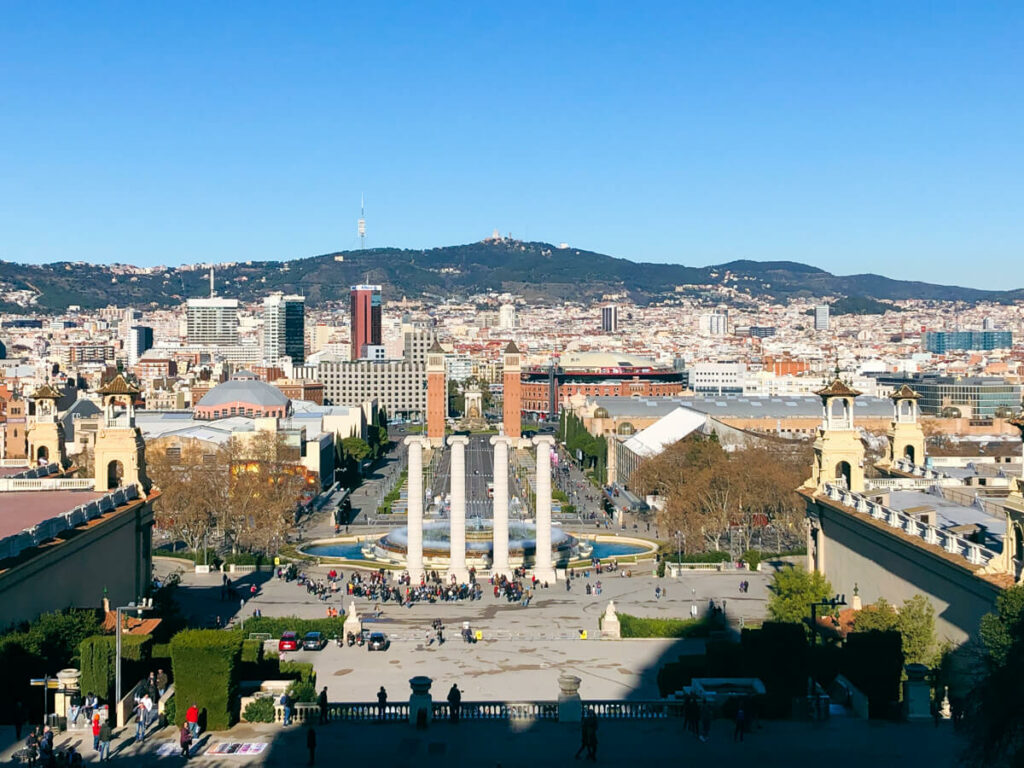
The city of Barcelona is adorned by the exquisite architecture of Catalan artist Antonio Gaudi. The Sagrada Familia is his most remarkable work built entirely from donation and is still under construction. The church of Sagrada, which is a UNESCO Heritage Site, is nothing like you've ever seen before, full of symbols from nature and intricate carvings. Other examples of his splendid work include Park Guell perched on a hill boasting stunning panoramic views of the whole city, Casa Batllo and Casa Mila - townhouses with a unique style.
After seeing Gaudi's work, head to the bustling La Rambla, the city's main pedestrianized street packed with shops, tapas bars, and various street artists. La Rambla goes all the way to the coast, where the Christopher Columbus statue points towards America.
To finish the day, don't forget to experience the Barcelona Magic Fountain in Montjuic, an evening show of light and synchronized music over the fountains in the park of the National Palace of Catalonia, located on the Montjuic hill.
From Mal Hellyer, Raw Mal Roams
Bilboa
Situated in the north of Spain, Bilbao is one of the top cities in Spain to visit. The city attracts over a million visitors every year due to the Guggenheim Museum. The Guggenheim Museum, designed by architect Frank Gehry who is world-famous for his many larger-than-life creations.
The museum opened its doors in 1997 and quickly became one of the most famous landmarks around the world.
The Casilda Iturrizar park is the city's biggest park where you will find both tourists and locals enjoying the beautiful scenery. It is an English-style park lined with trees, fountains, and tons of greenery.
Another great thing to do in Bilbao is to wander around through the small and charming streets in the old town. Here you will find the best tapas bars. Try out pintxos, the Basque version of tapas.
Make sure to take the Funicular de Artxanda for the most beautiful view over the town and to enjoy a wonderful walk.
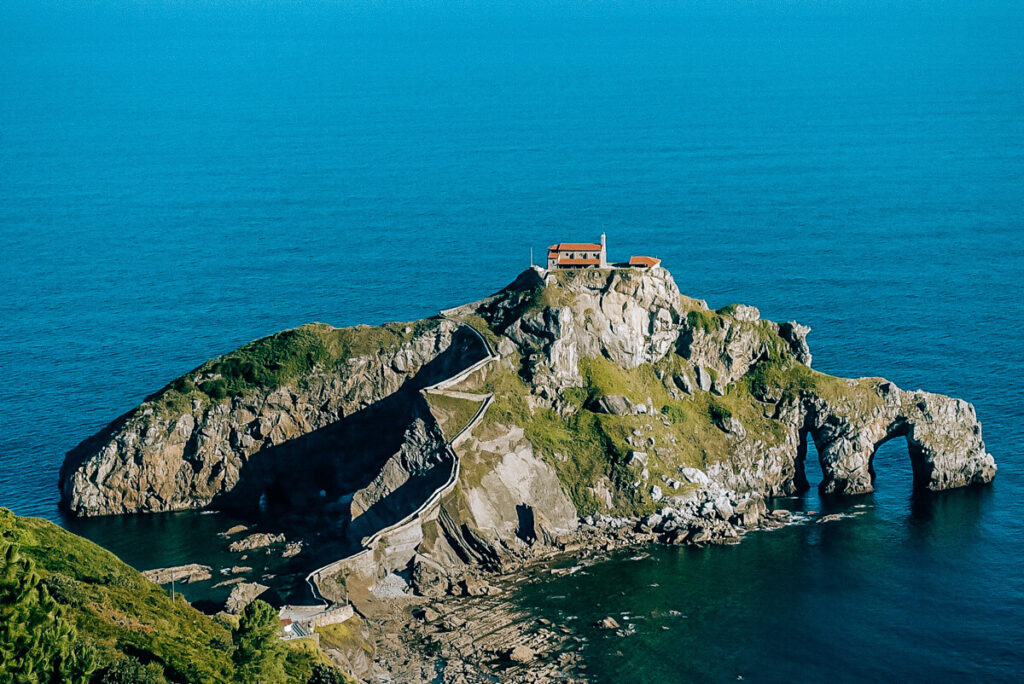
San Juan De Gaztelugatxe is a wonderful islet located 40 kilometers from Bilbao. It was one of the famous settings for the TV series Game of Thrones (Dragonstone if you're a fan!). If you have some time left and fancy a scenic wander, this is a place you don't want to miss out on.
From Stéphanie Beyens, Bey of Travel
Cordoba
The Andalucian city of Cordoba is a great place to visit for kids and teens because there aren't too many places that can claim to have been the greatest city in the world in its prime. Cordoba, now a quiet provincial city, can claim exactly that, and has the buildings - one in particular - to show for it.
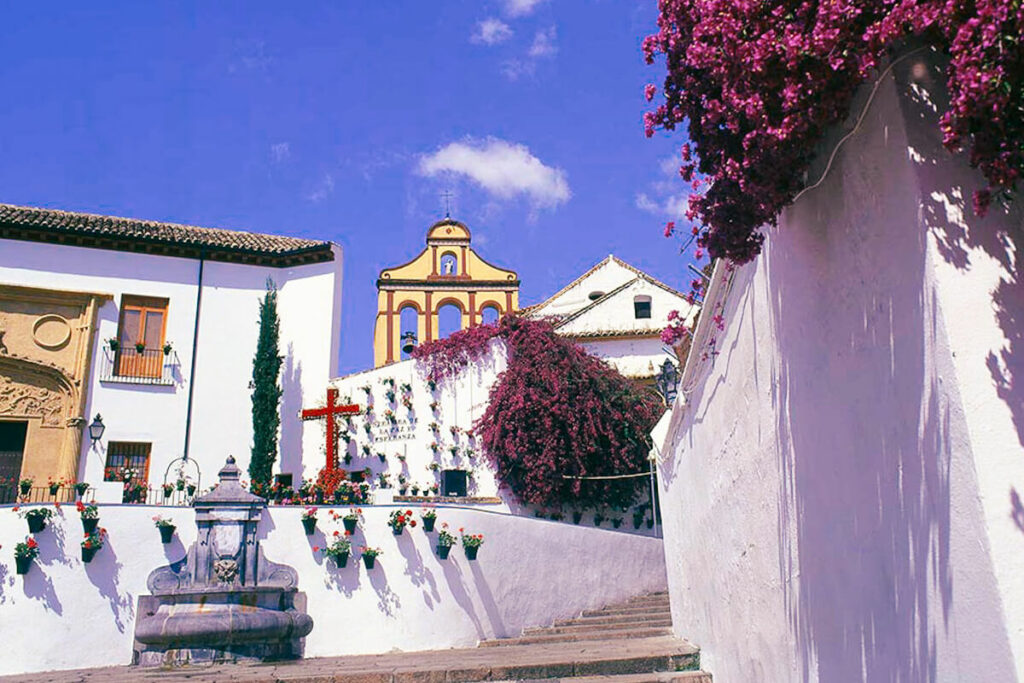
In the 10th century AD, when London and Paris were up-and-coming capitals with populations of around 20,000, Cordoba, the seat of a caliphate, was home to an incredible 400,000 people. It was a flourishing city of Arab learning, and certainly the most powerful city in the Mediterranean and European spheres.
The one absolute must-see in Cordoba is the Great Mosque or Mezquita. It dates from the 8th century AD and is a work of stunning simplicity, with its rows of red-and-white striped arches incorporated into the medieval Catholic Cathedral. The Mosque is one of the great Spanish landmarks, and the exterior, including the Patio de los Naranjos, is also magnificent.
The rest of Cordoba has a great range of things to see and experience, from an ancient Roman bridge to a medieval castle and the Juderia, the late medieval Jewish district. The city also has a modern centre away from the Old Town where visitors can return to the 21st century for a while, and also check out some of the tapas, which are among the best in Spain.
From David Angel, Delve Into Europe
Girona
Girona is a brilliant city for families to visit in combination with a seaside holiday on the Costa Brava. Under an hour from the beautiful beaches of the Catalonia coast, Girona is perfect for a day trip or city break. The city is easy to navigate and really fun to explore with children of all ages.
Girona is surrounded by high medieval stone walls which can be walked upon. If your children struggle with the idea of sightseeing in a city, exploring Girona from its walls is a great way to encourage children to walk a bit further. From the walls, there are fantastic views over the old town and on a clear day the Pyrenees mountains can be seen on the horizon.
Much of the medieval old town of Girona is pedestrianized so children can explore with relative independence. One of the highlights is the cathedral (a Game of Thrones filming location), reached by a long staircase up which (some) children will relish racing.
Many of the narrow streets of Girona old town are shaded by trees and canopies and thus feel relatively cool even in Spain's hot summers. Here you'll find lots of enticing shops and restaurants along with plenty of cafes selling ice cream. One of the most popular regional dishes in this part of Spain is botifarra, a delicious sausage even the fussiest children will enjoy eating.

The old and new parts of the city are separated by the Ongar River. The best way to cross the river is along the Pont de les Peixateries Velles, the most famous bridge in Girona which was designed by Gustav Eiffel - just before the great tower in Paris.
From Annabel Kirk, Smudged Postcard
Granada
Granada is a great cultural city to visit to take teens. The city is not only amazingly beautiful with a great tapas scene and flamenco shows to see. But it has one of the most important Moorish heritage sites in the country, the Alhambra.
A day trip to the Alhambra castle, fortress, and gardens will be an amazing history class walking back in time. The intriguing history of Moorish and Christian kingdoms that have ruled these complexes are hard not to be captured by. But there are many other historical buildings in the city, like Granada Cathedral that took nearly 200 years to finish!
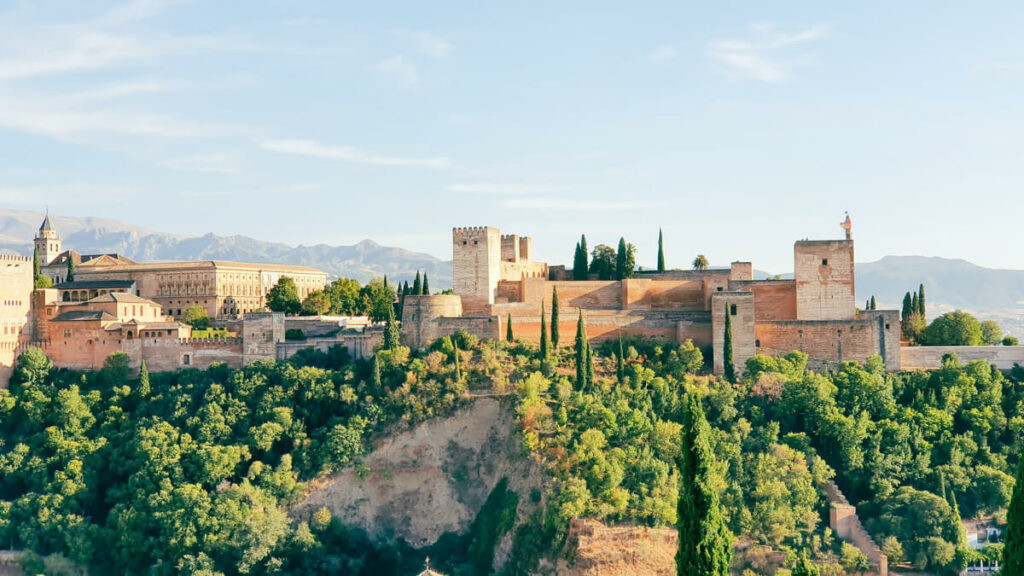
If you visit with an outdoorsy group, you can even mix culture and hiking in one experience. Granada city is the gateway to Sierra Nevada National Park and believe it or not, you can hike Mulhacen, mainland Spain's highest mountain in a day in the summer months. From the village of Capileira, there is a park bus taking you up to Mirador de Trevelez where you only have a 4-5 hours hike up and back to the summit.
This is not a challenging hike for teens and up if they are used to walking in the mountains. But Mulhacen is not only an iconic peak because of its altitude. There is a legend that one of Granada's Moorish kings was buried there. The king was involved in a dramatic love legend and won back his power from the people.
From Linn Haglund, Andalucia Hiking
Jerez de la Frontera
Jerez de la Frontera, or just Jerez for short, is a small city an hour south of Sevilla and 30 minutes north of Cadiz. It's a perfect place to really delve into the culture of southern Spain.
Known for its sherry production, acclaimed riding school and horse tradition, and flamenco, there's plenty to learn and do. Some of the best places to visit are the Royal Andalusian School of Equestrian Art, any number of sherry bodegas which will teach you the history and tradition of the drink, and the same goes with Flamenco shows.
The Riding school is one of the most popular places to visit, and it's where you can see everything from the artisans working on the horse leathers, working out the horses, and an unforgettable horse show. Each May, Jerez hosts the Feria de Caballo, where you can wander and see more of the horses and carriages of the region.
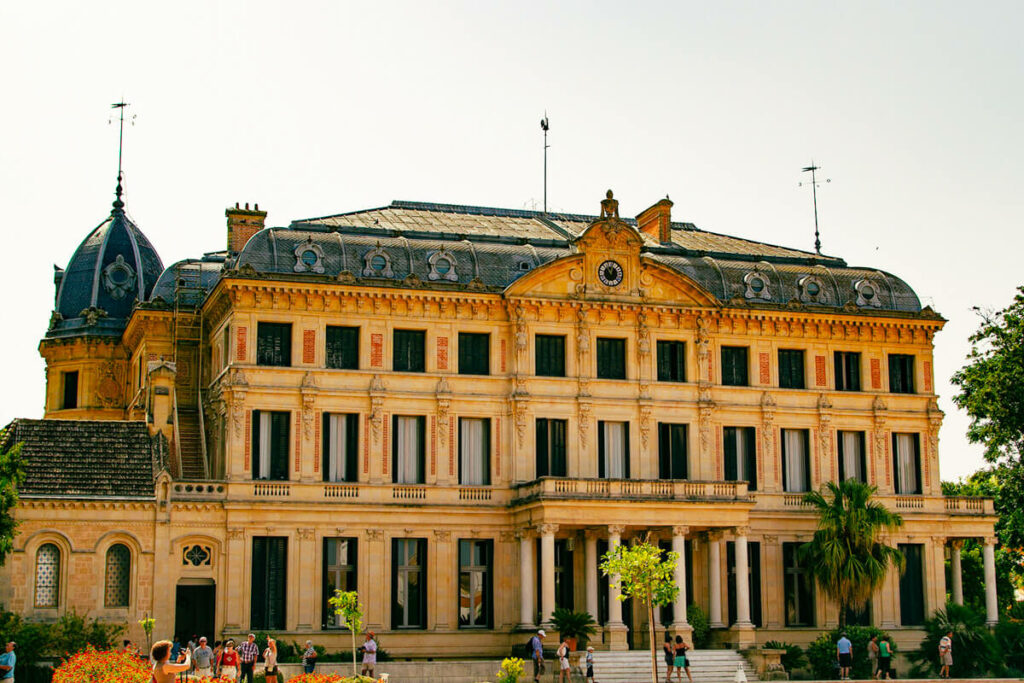
Jerez is also known for its sherry and flamenco, and it's very easy to find flamenco shows throughout the city. For kids, there are restaurants that will have flamenco dancing while you eat. This is a better option than waiting for a traditional show to begin, around midnight.
Other sights in the city include the Alcazar de Jerez, the zoo, the cathedral, and the Alameda Vieja. Jerez de la Frontera is a fantastic destination for everyone.
From Corinne Vail, Reflections Enroute
Madrid
The capital city of Madrid is vibrant and full of culture and was the seat of power of the vast Spanish empire in the 16-17th centuries. Madrid is a city of surprises with its green heart of elegant gardens such as Retiro - once a royal garden.
Start your Madrid itinerary at the Prado - one of the world's most popular art museums, featuring artists from all over Europe. The largest collections on display are by the Spanish artists Goya, Velásquez, and El Greco. The 17th century Royal Palace, built for Philip V, is the largest in Europe and is a beautiful blend of baroque and neoclassical styles. Art and beautiful frescoes are on display there and the only string quartet of Stradivarius instruments in the world.
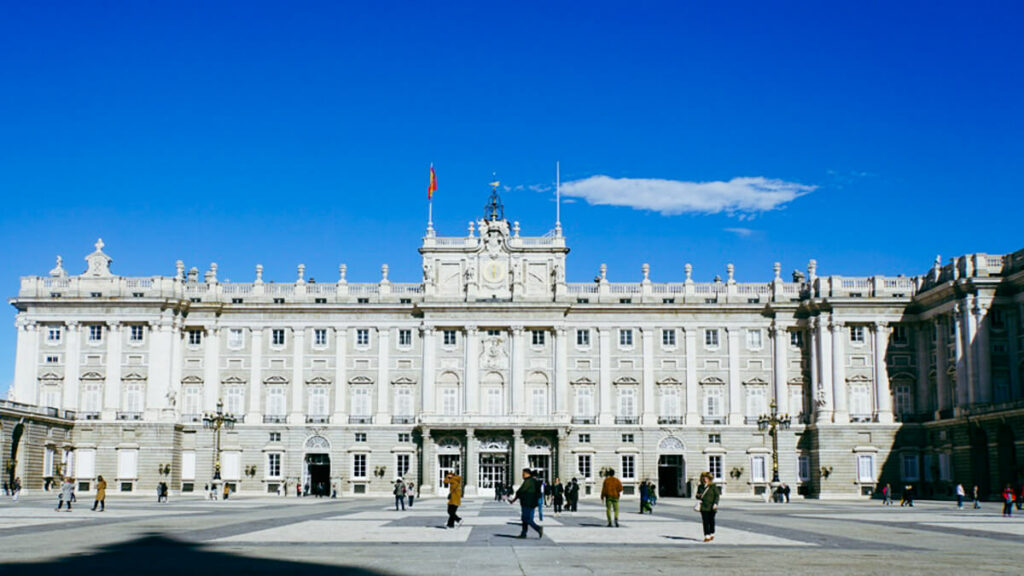
The National Archaeological Museum traces the country's long and colorful history and has an impressive collection of items from the Roman period.
If you want to feel the pulse of Madrid, take a stroll along Gran Via as this is the main street - busy with shoppers by day and popular for its theatres and nightclubs at night.
Next, head to Puerta del Sol, one of the city's most famous squares and dominated by the clock on the top of the Casa de Correos In complete contrast, the Santiago Bernabéu Stadium is home to Europe's top football club Real Madrid and hosts regular tours.
What is Spain famous for? Madrid is high on the list.
From Chrysoula, Two Days in a City
Malaga
Malaga, located in the beautiful region of Andalusia in Southern Spain, is an excellent choice for families and children to visit. The city offers a wide variety of historical, cultural, and entertaining activities that will impress you.
A must-see historical place is La Alcazaba, a Moorish fortress-palace built between 1057 and 1063. The main purpose of this building was for the military as it has strategic views of the city and port.
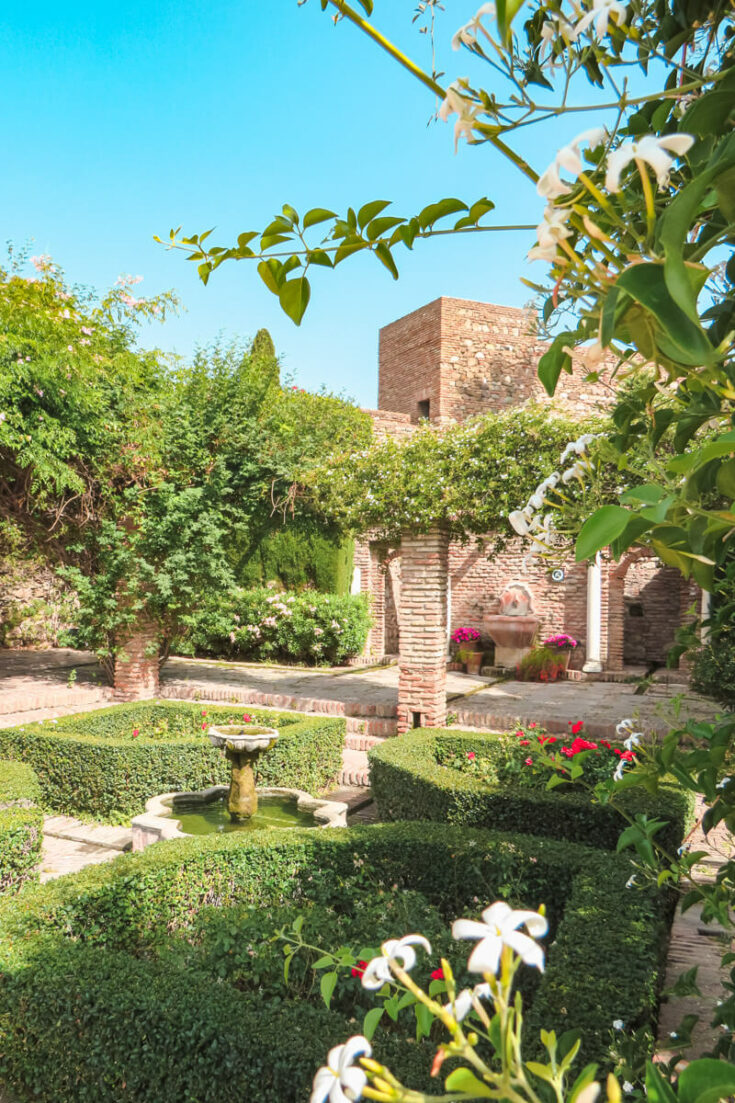
Nowadays, many tourists and student groups visit the palace to learn about the Muslim period in Andalusia and enjoy the panoramic views from its tallest point.
Next to La Alcazaba is also the Roman Theatre, the oldest monument in Malaga. Both historical places are located at the heart of the city.
Apart from historical places, Malaga also has numerous museums that offer educational activities for children.
For those interested in art, Museo Picasso Malaga organizes outstanding ceramic and painting workshops in which kids, as well as adults, can learn how to work with clay, different textures, and painting techniques.
Another great museum for kids is Centro de Ciencia Principia located next to La Rosaleda football stadium.
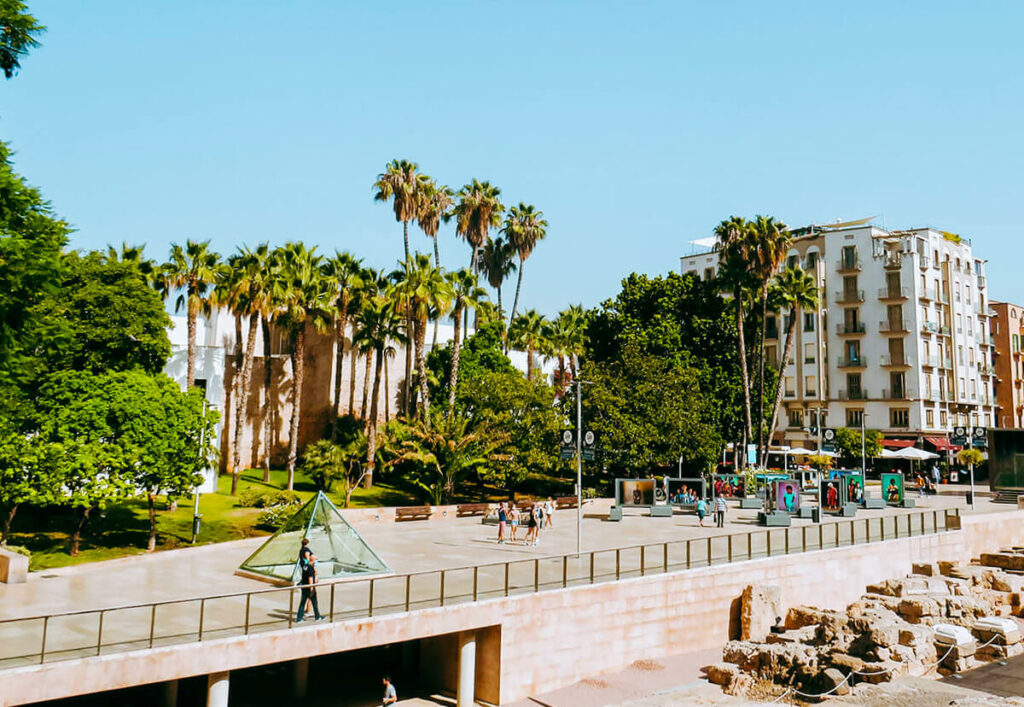
This interactive science museum has an incredible planetarium and offers experiment lessons that will teach children science and chemistry in an enjoyable and memorable way.
Last but not least, you'll also find parks and gardens in which children can connect and learn about nature. Some of these include La Concepcion botanic garden, one of the most popular in the city."
From Cristina Reina, My Little World of Travelling
Montserrat
Visiting Montserrat is a popular day trip from Barcelona and a great place for people of all ages to visit. It's best known for its mountain-top monastery built in the 11th century. Some people visit as a religious pilgrimage, and others to embrace history and local culture. Whatever the reason, it's worth visiting this striking setting in these rugged and unique mountains.
Take a gondola ride up to the abbey and explore the many hiking trails. You'll see spectacular views of Catalonia from these interesting and unique mountains. There are a lot of trails ranging in difficulty to please anyone.
In addition to the spectacular location and ambiance, Montserrat is known for the Black Madonna. The Virgin of Montserrat was found in a nearby cave in the year 880, according to legend. She is the patron saint of Catalonia and is believed to have healing properties if you touch her. You can also visit the grotto where she was found if you're interested.
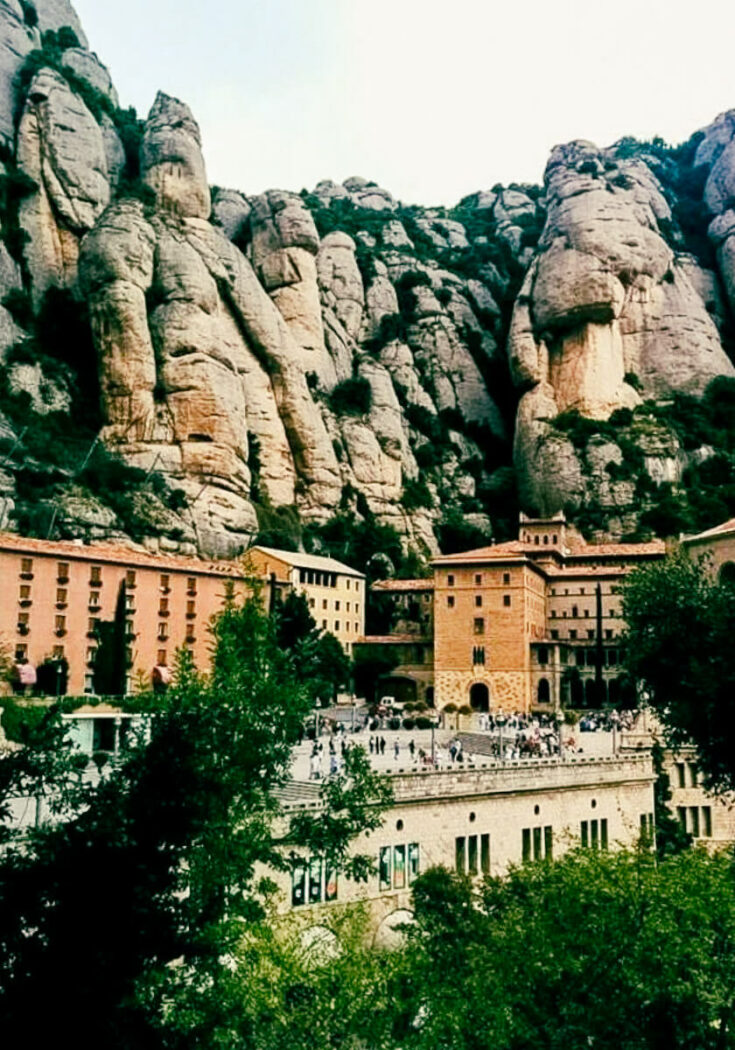
Another unique thing you can do when visiting is see the Monsterrat Boys Choir. They are one of the oldest boys choirs in the world dating back from the 13th and 14th centuries. You can hear them sing twice daily. It's a popular thing to do and a special aspect of your visit.
This beautiful monastery is steeped in history and an important part of local culture. Take some time hiking the mountain and enjoying the views, visiting the cathedral and the Black Madonna, then explore the museum for a deeper dive into why it's so special.
From Sam, My Flying Leap
Palma
One of the best cities in Spain to visit with kids is Palma. The city of Palma is located on the Eastern side of Mallorca, one of the best islands in Spain for families. Palma is known for many things.
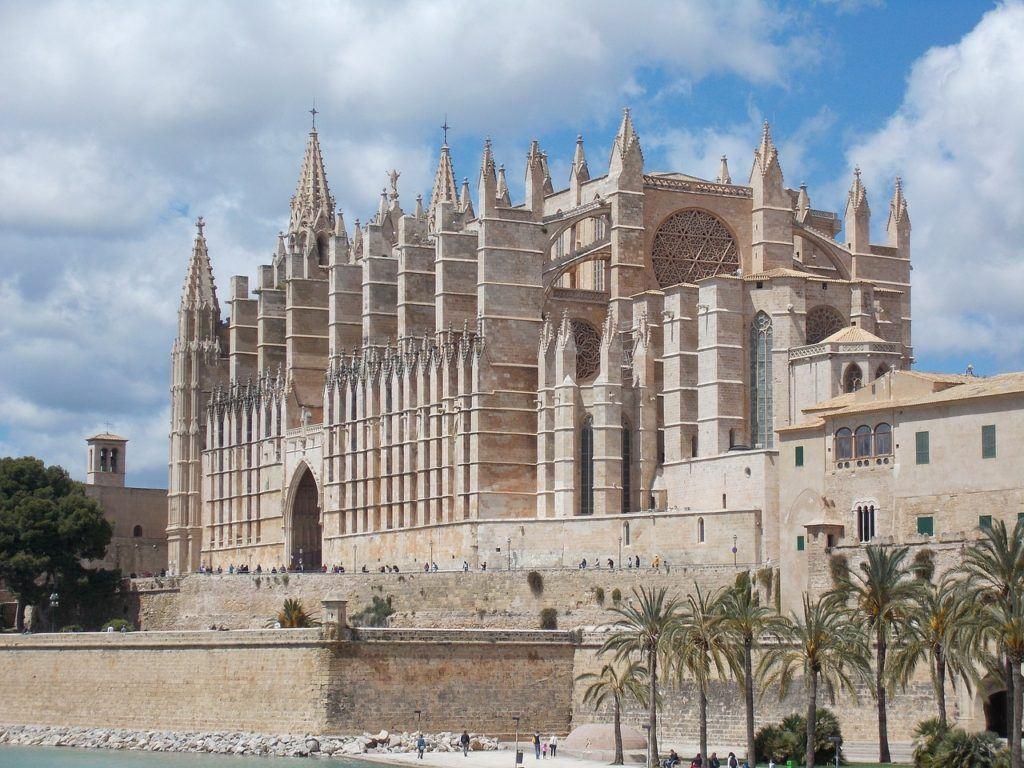
The towering cathedral of Palma (La Seu) is one of Spain's most well-known and iconic landmarks. Visiting Palma Cathedral, kids can learn a lot about Palma's role in the history of Spain and have a religious insight too.
When you're in Palma, you can't miss the Train de Soller. The historic train runs from Palma through the picturesque Tramantura Mountain range to the beautiful village of Soller. The train ride is a great attraction for the kids to learn about geography.
The city of Palma has many fantastic beaches just a short distance away. 10km southeast of the city, you'll find Playa de Palma - a beautiful stretch of white sand with crystal clear waters. Ca'n Pere Antoni is the nearest beach to Palma - a tranquil getaway? Why not stay near the beach and travel into the city to see the main sights.
From Sylvie Simpson, Travels With Eden
Salamanca
Salamanca should be on the shortlist of kid-friendly cities for any family moving to Spain. As a World Heritage Site and home to the second oldest University in Europe, youngsters at an inquisitive learning age or university-bound teens will enjoy the cultural and educational vibe of the city.
If you plan to stay in Salamanca for more than a couple of days, purchase a Salamanca card for free or discounted entry into many cities, museums, attractions, and cultural sites. The Tourist Office in Plaza Mayor has them for sale for roughly 25 EUR. With your card in hand, here are the must-see attractions for your family to see while in Salamanca.
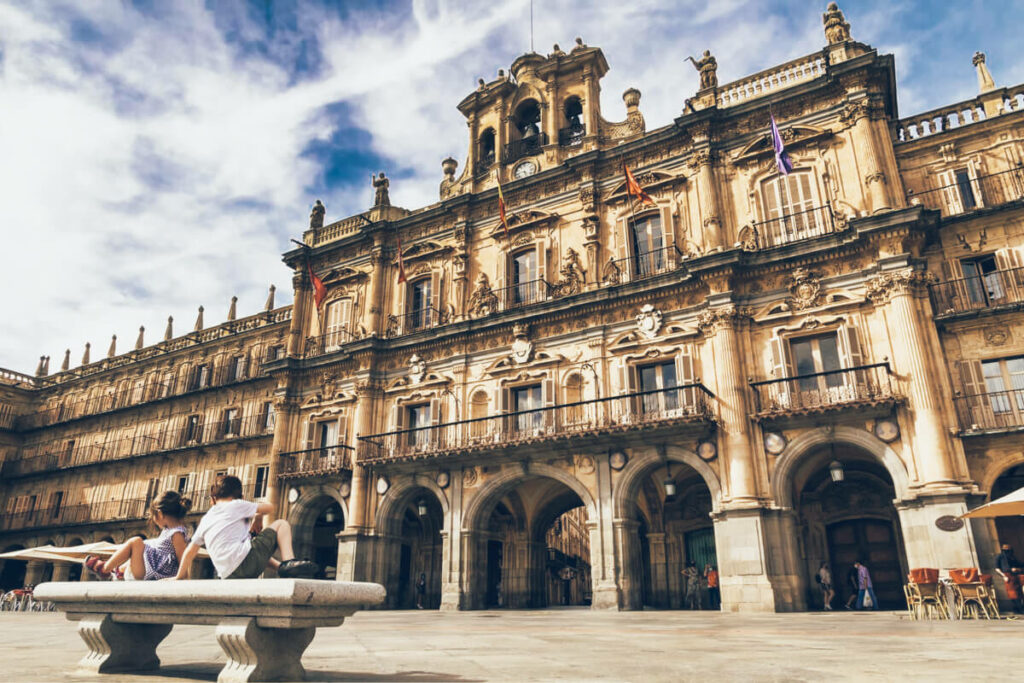
Plaza Mayor
Salamanca's central square isn't the massive spectacle of the Plaza Mayor in Madrid, but it still has its charm. Enjoy people watching while sipping coffee at any of the cafes ringing the square. The Plaza acts as the central meeting point for student artists in the city.
You'll be serenaded by guitarists and singers or entertained by some of the local school's comedic theater performances.
Speaking of schools, the University of Salamanca is the heart of the youthful, upbeat vibe of the city. The University is one of the oldest in the world, second only to Bologna for Europe.
While the teens look around the gorgeous campus architecture, the younger kids can play "Find The Frog" hidden in the facade covering the University's entrance. Local tradition says it's good luck if you can find the frog without any help.
Families with kids should definitely visit the Art Nouveau and Art Deco Museum, with its beautiful stain-glass windows and an extensive collection of toys, action figures, and porcelain dolls. The soulless dark eyes of the dolls are creepy to some but usually a delight for kids.
From Marco Sison, Nomadic Fire
San Sebastian
San Sebastian is a popular city in the northeast of Spain, just 20 kilometers away from the French border. The city is a beautiful historic place with many old buildings some of which date back to the early 18th century.
Walking through the old town is a must-do experience and you'll find a lot of little restaurants and fantastic sightseeing spots. You should stop by the Plaza de la Constitución which is a transformed bullfighting arena to a market square with some cafes and restaurants.

Another fantastic place to see is definitely the Iglesia de San Vicente, a church from the 12th century, which is also the oldest building in the city. While you're still in the old town, you should stop in one of the many restaurants or pubs to grab some lunch. It is world-famous for its tapas and home to many incredible restaurants.
Probably the most well-known landmark in San Sebastian is the Castillo de la Mota. There is a large Jesus statue that sits on top of a former protective fortress. The fortress itself also dates back to the 12th century. It takes some time to hike to the top, but the views are well worth it.
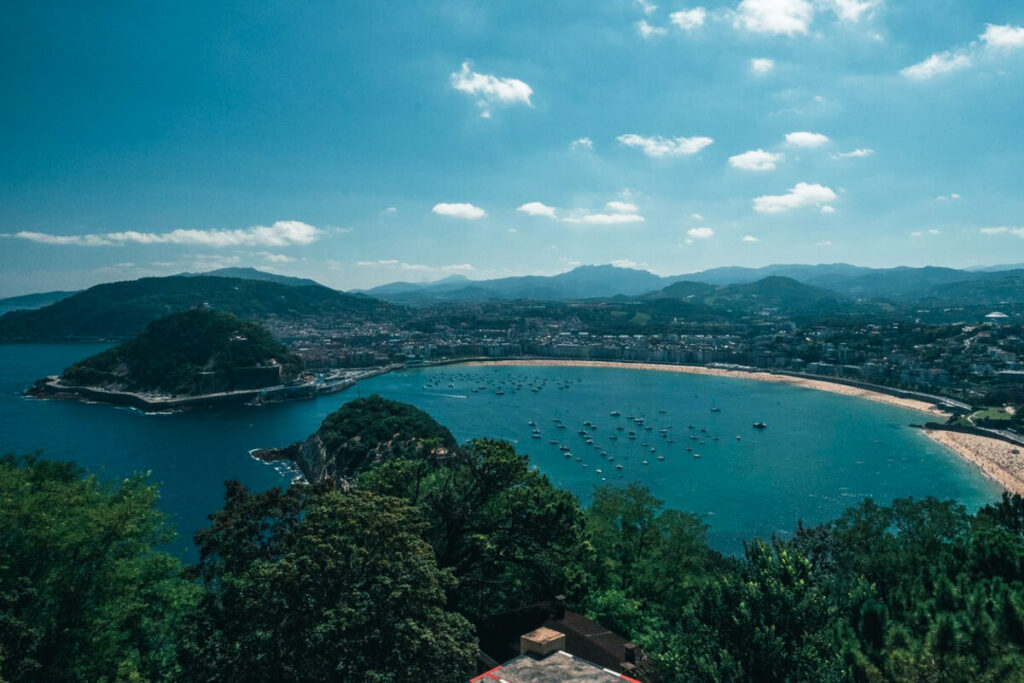
To get the best views overlooking the city you should definitely take the funicular up to Monte Igueldo, the highest mountain of San Sebastian. The round-trip ticket costs only 3€ per person and is only one of the many fun things to do in the area.
From Victoria Heinz, Guide Your Travel Blog
Santander
What makes Spain unique is that it doesn't just have beaches and tapas but also mountains and lots of nature to offer to those who prefer the outdoors and are happy doing activities such as hiking and even skiing!
One of the best regions to offer all of this in Spain is the Northern Spain region that includes Cantabria, the capital of which is Santander.
You'll find all that Spain has to offer here that is culture, history and architecture but what makes the city unique is that you'll also find the weather to be more pleasant and not scorching here in the summer months.

It is the ideal getaway for those who prefer city breaks away from the crowds, yet also need their share of tapas, called pinchos here. The prices here, no matter for stay or meals, are budget-friendly. For 10 Euros, you can get at least 7-8 individual pieces of tapas and 2 pints!
The best way to get here is by internal flight from Barcelona. However, the city is well-connected internationally, and many ferries run here as well.
Visitors can enjoy the beaches, go surfing and also ski and hike in the Picos De Europa, which are located a couple of hours away. There are many museums with prehistoric items as well on display here!
From Lavina Dsouza, Continent Hop
Santiago de Compostela
Santiago de Compostela, the main city in Galicia, is one of the most beautiful cities to visit in Spain, known for its incredible atmosphere. This is the final stop of the Camino de Santiago (the Way of St. James), a pilgrimage that departs from various places in Spain, France, and Portugal for what is more than anything else a journey of self-discovery.
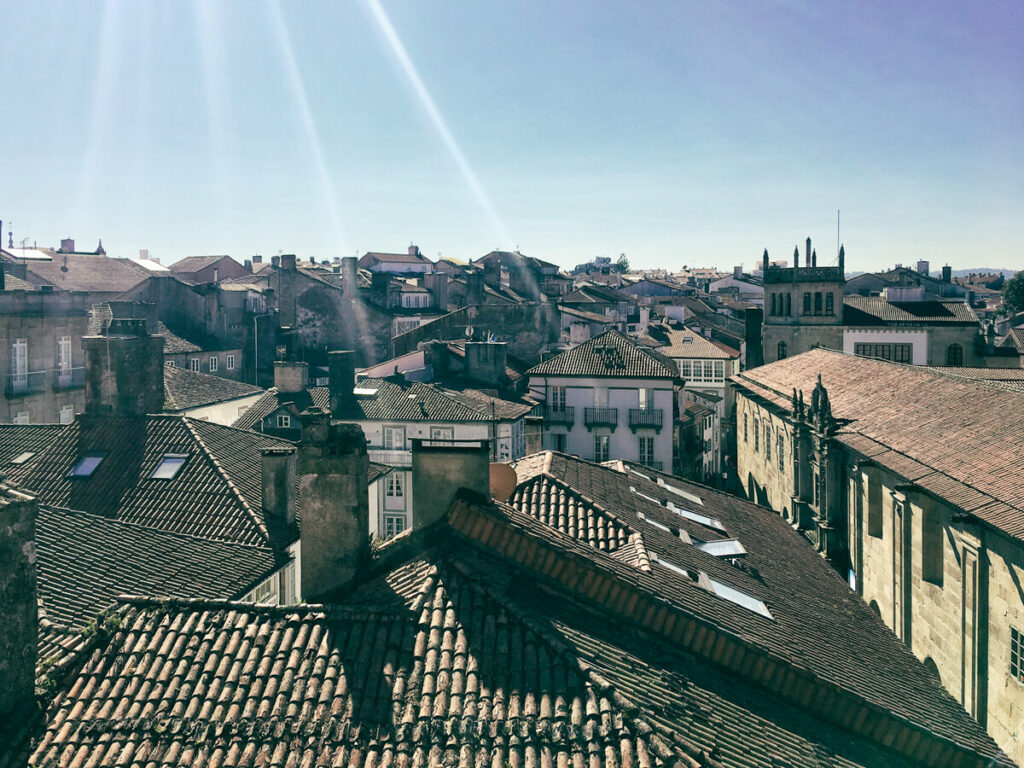
A UNESCO World Heritage Site since 1985, Santiago has a variety of places to visit that you can enjoy. Most people start their exploration from the Cathedral, a gorgeous building where you'll find the Crypt of St. James and a museum. Walk up to the terrace of the museum and you'll enjoy a magnificent view of Obradorio Square.
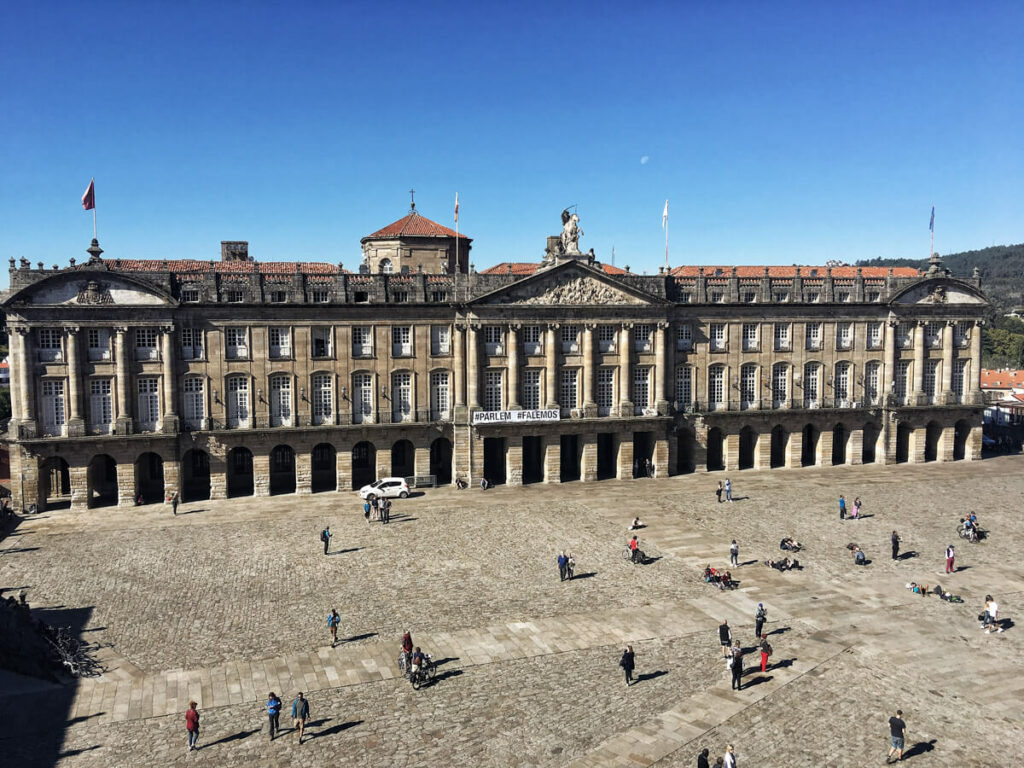
Other places to visit in town are the Hostal de Los Reyes Católicos, a historical hostel for pilgrims; the Parador Santiago de Compostela, a gorgeous 5-star hotel with a stunning lobby; the Mercado de Abastos and the historical center, where you'll find plenty of small cafés and bars to have a bite and a drink.
Should you have enough time in Santiago, make sure to head out of town to visit the Pazo de Oca, a short driving distance from the city and often referred to as the Galician Versailles. The owners still live in the palace, so you can't visit the interiors, but the gardens are a fantastic place for a walk!
Fancy wine? Pazo de Gallegos is one of the best wineries in Galicia. Set in a beautiful palace (pazo is Galician for palace!), wine tours will take you through the vineyard and include the tasting of fabulous local wines.
From Claudia Tavani, My Adventures Across The World
Seville
Seville, the beautiful capital of the Andalusia region, is one of the best cities in Spain for culture, food, art, and history. School-age kids and teens will get incredible educational value from a trip to Seville simply because this city is filled with monuments of historical and cultural significance. Moreover, Seville is the birthplace of tapas, so everyone is bound to go home with a happy stomach!
Spend at least 3 days in Seville to cover all the main points of interest. Plaza de España is a great place to start with, and it is home to some gorgeous azulejos (traditional ceramic tiles). There's also a canal in the middle of the square with picturesque bridges crossing over it. It is truly one of the most cultural and breathtaking spots in Seville.
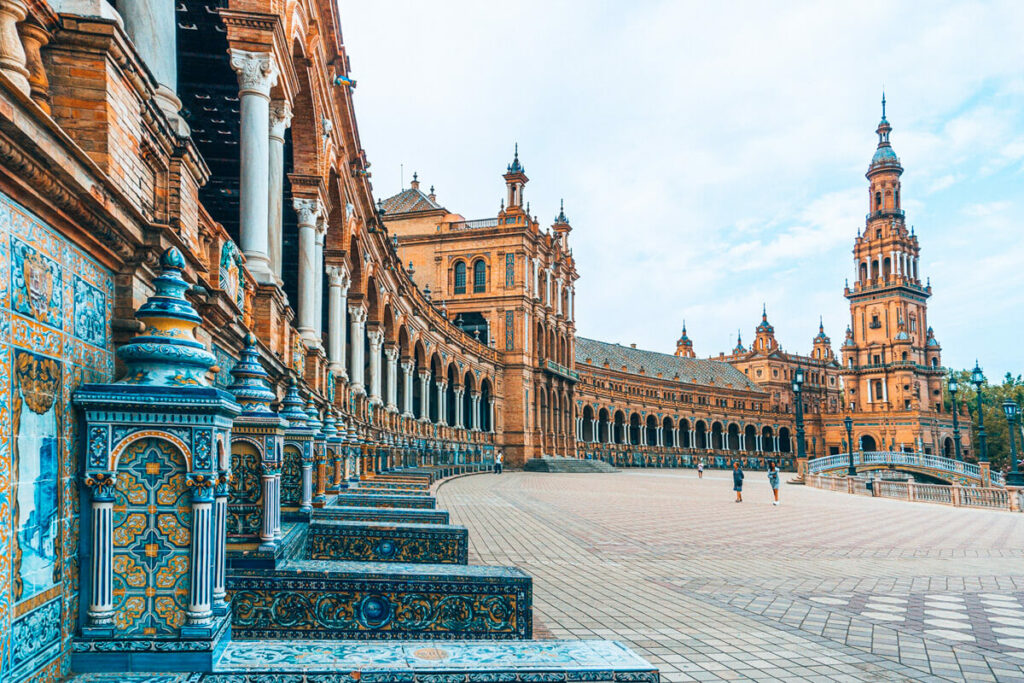
To learn more about the history of the city, head over to the Royal Alcázar, which has accumulated over 1,000 years of history. There's a variety of architectural styles in this palace, from Mudéjar to Gothic and Renaissance, and students can learn all about the different kings who've inhabited this palace throughout the years.
An amazing cultural activity to do in Seville (aside from stuffing yourself with all the tapas) is to watch a flamenco show. There are plenty of flamenco venues around town, and you can even learn about the history of this traditional folk art from the Flamenco Dance Museum!
From Jiayi Wang, The Diary of a Nomad
Tarragona
Tarragona is a unique city in Spain, full of history and culture. As one of the most important Roman settlements in the country, the city, then called Tarraco, already made a name for itself in Roman times.
Tarragona is located on the Costa Daurada in Catalonia. With its proximity to the Catalan capital, you can also perfectly visit Tarragona as a day trip from Barcelona.
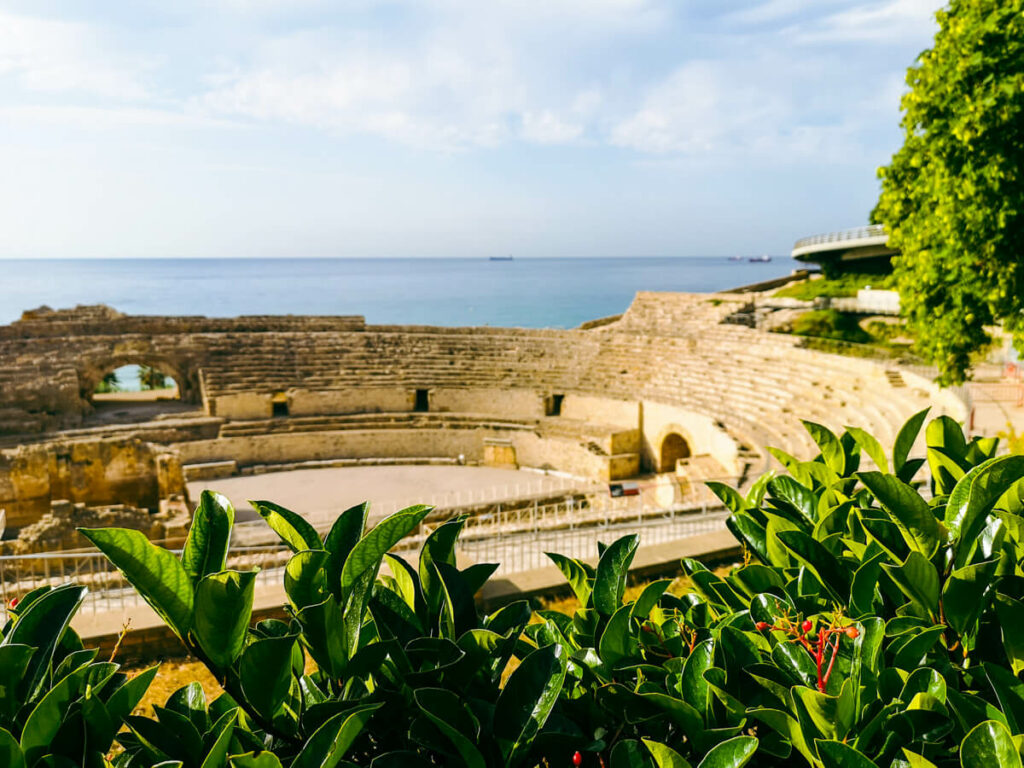
The most impressive sight of the city is arguably the Amphitheater de Tarraco. In Roman times, the amphitheater was used for many important events and also attracted residents from the surrounding areas to visit the city. Even then, the amphitheater of Tarragona was considered something extraordinary, because of its location near the sea.
In addition to the theater, other Roman sights are waiting for you throughout the historic city center of Tarragona, such as the Roman Circus or the path along the ancient city wall.
For children, the Plaça de Sedassos is probably the most fun place to visit. Here is a building mural painted from top to bottom. The figures can be seen on the wall of the house show Catalan personalities from the 19th century.
After sightseeing, you might probably also want to visit one of the fantastic beaches of the Tarragona area. Conveniently located at Costa Daurada, there are plenty of wonderful beaches to see in the area.
From Vicki Viaja
Toledo
Toledo is one of the most beautiful and culturally rich cities in Spain.
Christians, Muslims, and Jews, all three influenced the impressive heritage of "The City of Three Cultures". Also, the city served as one of the main courts of Charles V, Holy Roman Emperor. The Visigoths even controlled the city for over 150 years.
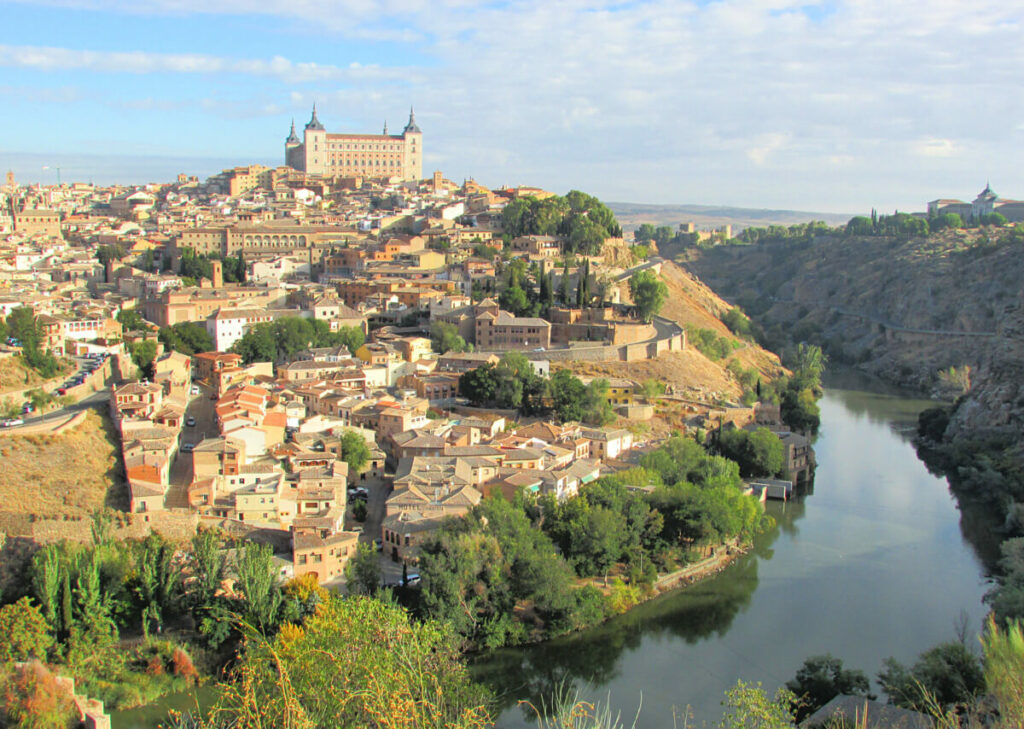
When visiting, it is recommended to take an open bus or taxi to the Mirador del Valle. From this viewpoint, you will have spectacular vistas of the city and River Tagus. In addition, you can stop to take a look at the San Martin Bridge, a structure dating back to Medieval times.
For views from the city (on foot), head to San Martin Park, Safont Park, or the Alcantara Bridge area. A walking/hiking path (Senda Ecologica) across from the historic core of the city lines the river.
The Alcazar, a fortification located on the highest part of the city, houses the Army Museum (Museo del Ejercito). There you will find displays of artillery, flags, bladed weapons, and firearms. Also are opportunities to check out the Alcazar's crypts, cisterns, stables, and spiral staircase.
Toledo is a well-known traditional sword-making center. You will find plenty of stores selling and displaying these beauties.
When it comes to food, marzipan is one of the city's main confections. Sugar artists shape this almond and sugar paste into cute figures. In addition, Toledo is also a great place to try game meat. At restaurants like La Abadia, you can have venison or partridge.

Other attractions
Other attractions in Toledo include the Cathedral, Jewish Quarter, San Juan Monastery, Santa Maria Synagogue, and Santo Tome Church.
Reach Toledo from Madrid by train or bus.
There are so many amazing cities and towns to visit in Spain. These Spanish cities are fabulous places to visit for families or solo adventurers. Just looking back at all these pictures makes me want to plan another trip!
From Tana Matales
Popular Sports in Spain
So what else is Spain known for? How about sports?
Football (soccer)
In Spain, as in most of the world other than the U.S., soccer is known as football. It is one of those sports that reaches countries the world over and goes beyond one culture. The well-respected National Football Team of Spain was the first European team to win a FIFA World Cup outside of Europe in 2010.
Other famous Spanish football club teams include Real Madrid, FC Barcelona, and Atlético de Madrid.
Tennis
Another incredibly popular sport in Spain is tennis. In fact, the fabulously chic Real Club Barcelona hosts the Barcelona Open annually. Most people will agree Rafael Nadal is the most famous tennis player in Spain and won the 2021 Barcelona Open in the final to defeat Stefanos Tsitsipas.
Basketball
Surprisingly or not, basketball is a very popular sport in Spain and beloved especially by its loyal fans in the country. Spanish teams regularly compete in international championships including the EuroLeague and the EuroCup. Also, FIBA (the International Basketball Federation) organizes and regulates Spain's ACB basketball league, consisting of 18 professional basketball teams.
Bullfighting
Earlier in the article, we discussed bullfighting. Some consider it a sport, a blood sport at that, and others look at it more as a form of art or cultural tradition. The bullfighter, or matador, goes through a series of moves to tire out the bull, many of which have special meaning to the bullfighter. Traditionally, at the end of the fight, the bullfighter's sword kills the bull. I like the version better when the matador pardons the bull, and it lives and returns home with its owner.
What is Spain known for? History
King Ferdinand and Queen Isabella
If you think about the history of Spain, most people will probably come up with the names Ferdinand and Isabella. In American history classes we learn about them as the rulers who funded Christopher Columbus on his voyage of discovery. However, also in 1492, their army captured Granada after a long siege, the final defeat of the Moors in Spain. At that time the monarchy forced the Jews to convert to Christianity or expelled them from Spain.
Francisco Franco
Spain became a republic in 1931, and forced the Spanish king to abdicate. Then from 1936 to 1939, Spain fought a Civil War ending with the rise of General Francisco Franco. He then established a dictatorship over the country until his death in 1975. At that time, Spain crowned Juan Carlos de Borbón king and became a constitutional monarchy.
More to learn about Spain
This is obviously a quick glance at what Spain is known for. I'm a details person and love to dig in a bit deeper, but for now, this is a great quick list. To learn more and even get in the mood for your own trip to Spain, I'll soon publish another post on Spain books - fiction books set in Spain, Spain travel books, history, and more!
It's here! For more history and books to read set in Spain or about Spain, check out this article on Spain Books | The Best Guidebooks and Novels for a Trip to Spain!
What else is Spain famous for?
Did we get most everything? I know there are facts and fascinating culture tips I've missed, but let me tell you, I am READY for next year's trip to Barcelona and the surrounding areas NOW! I absolutely loved hearing from all the other travelers to Spain and am so grateful for their insight into the most famous cities in Spain.
Now the question is - what will you do with all this information? Do you want to dive into a book and research Spain, do a school report about Spain, or like me are you ready to travel? City or countryside - history or modern day? Maybe a little of all of the above? Yes, please!
I hope you enjoyed this whirlwind tour. Vamos!
Pin it for later here:


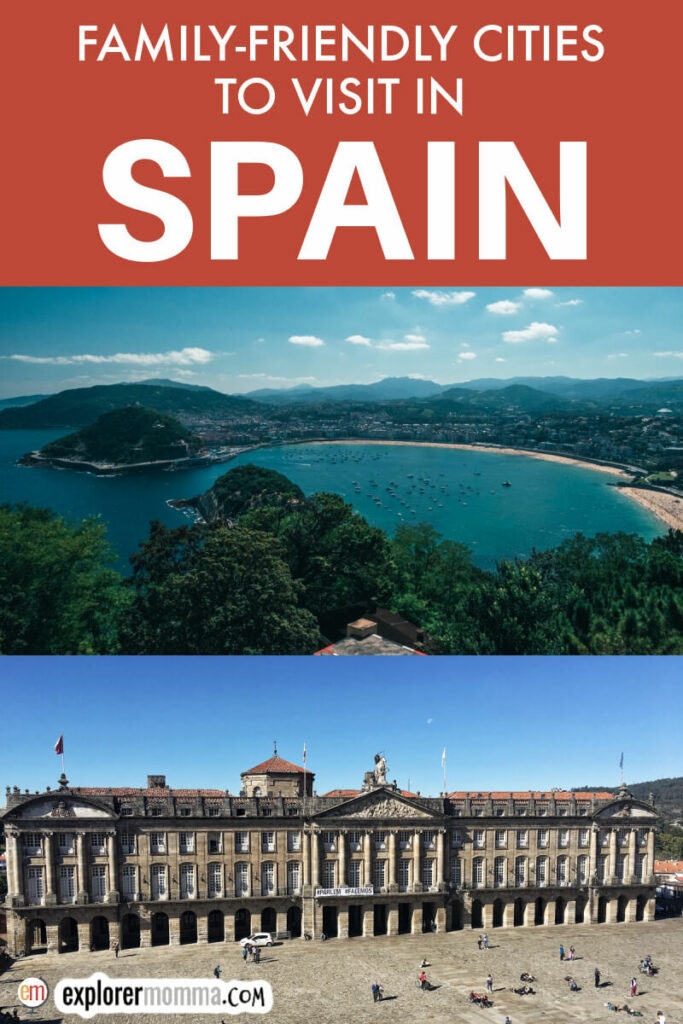
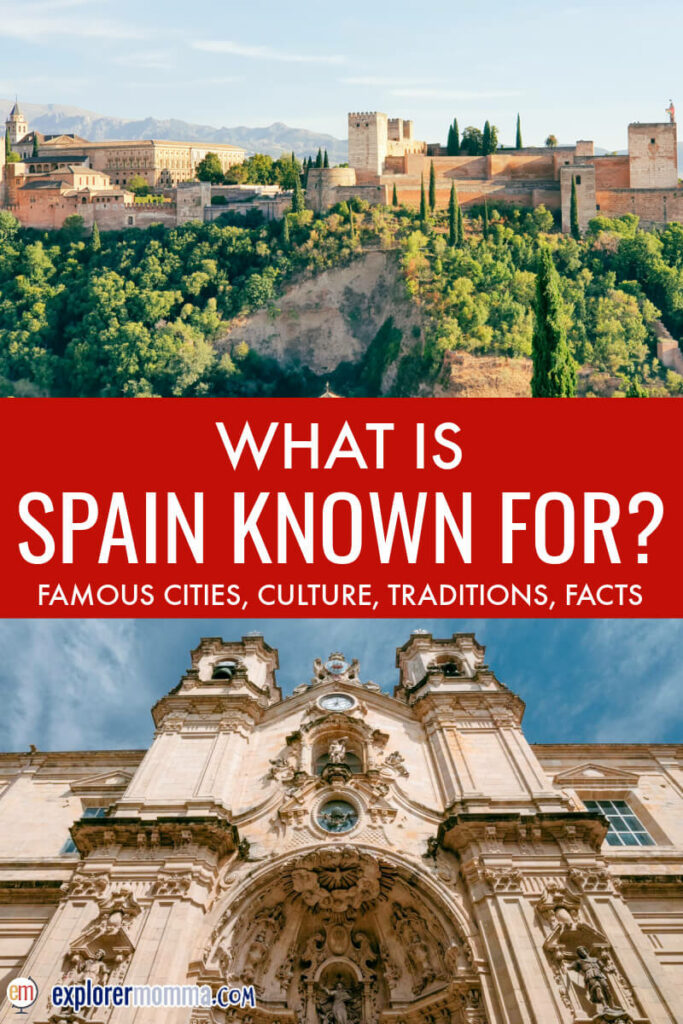
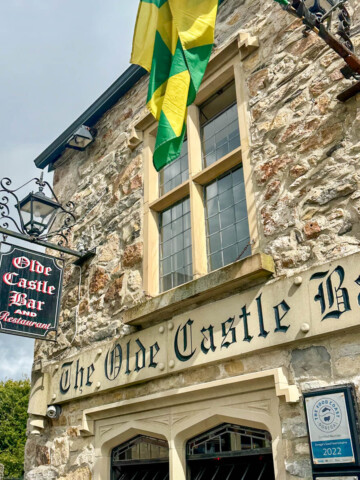
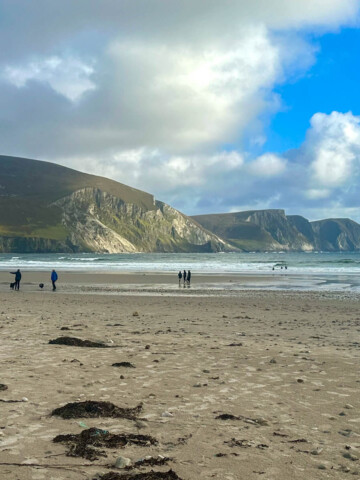
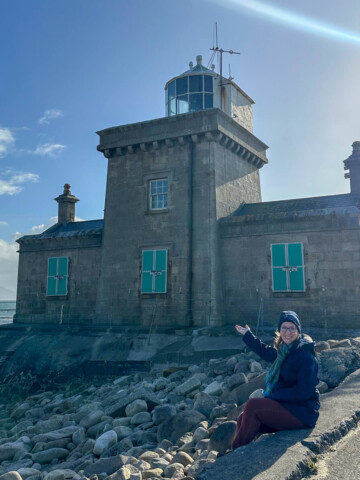

Leave a Reply